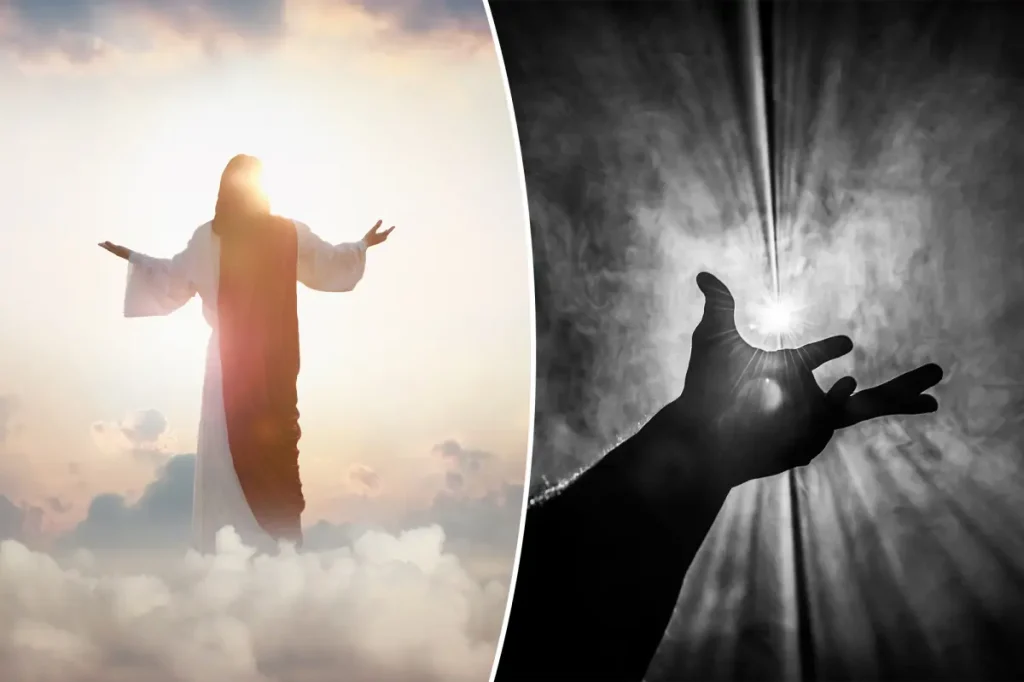Near-Death Experiences: A Glimpse Into the Unknown
What happens when we die? This question has fascinated humanity since the dawn of consciousness. A new scientific investigation, recently reported by the Daily Mail, has taken us one step closer to understanding what may lie beyond our final moments. Researchers interviewed 48 people who had survived near-death experiences (NDEs), asking them to describe and even sketch what they witnessed in their perceived final moments. Their accounts revealed a fascinating array of experiences, from encounters with divine beings to journeys through otherworldly realms. While some described meeting religious figures like Jesus or God—”There were stone stairs on the left in front of me, and Jesus was toward the top, wearing a white robe,” recalled one participant—others reported experiences that transcended traditional religious frameworks, such as cosmic “matrices” or “black holes.” One particularly vivid account described an angel with “exquisite white wings, the feathers incredibly detailed and layered onto one another” and a “face like that of a Greek god.” Dr. France Lerner, the lead researcher from the Beijing Institute of Mathematical Sciences and Applications, suggests that cultural beliefs significantly influence what people experience during NDEs, potentially explaining why some participants reported hearing “men reading the Torah,” while others described Jesus or angelic beings.
Despite the diversity of experiences, researchers identified common elements across many NDEs—tunnels, bright lights, staircases, deceased loved ones, and sometimes geometric patterns or cosmic visions. The study, which awaits peer review, categorized these experiences into four distinct “spatial types.” A-shapes involved narrow, tunnel-like vision, possibly resulting from reduced blood flow to the brain. B- and C-shapes occurred in elliptical or arch-like spaces, likely triggered as half of the visual field is temporarily lost. The most complex, C5-shapes, occurred within a full 360-degree “ellipsoidal enclosure.” Most intriguingly, people typically progressed from A-shape to C5-shape experiences as their NDE developed, leading researchers to believe these phenomena may have the same physical cause. Dr. Lerner emphasizes that these findings don’t necessarily suggest the existence of a separable soul or consciousness independent of the body. Rather, they might reflect the brain’s final attempts to interpret fading sensory information as bodily functions shut down—a neurological rather than supernatural explanation for these profound experiences.
The wide variety of reported visions—from heavenly staircases and angelic beings to cosmic matrices and black holes—highlights the deeply personal nature of near-death experiences. While the Beijing study focused primarily on the imagery and content of these visions, complementary research from the University of Virginia (UVA) has examined what happens after people return from the brink. This research found that approximately 15% of severely ill patients report having an NDE, which may include out-of-body sensations, reunions with deceased loved ones, or overwhelming feelings of peace and tranquility. To better understand the aftermath of these experiences, UVA researchers surveyed 167 people who had undergone such episodes, discovering that the aftereffects can be as life-altering as the experiences themselves. Nearly 70% of participants reported major shifts in their spiritual or religious beliefs, along with a significantly reduced fear of death—suggesting that these experiences fundamentally change how people view mortality and existence.
However, these transformative experiences often come with significant personal costs. Over 20% of participants reported relationship difficulties or divorces following their NDE, while many described persistent feelings of loneliness and isolation. One participant aptly described their NDE as a “double-edged sword”—an event too profound and personal to share freely, for fear of being misunderstood or dismissed by others. This social isolation represents a little-discussed aspect of near-death experiences: while the event itself may be spiritually enriching, integrating that experience back into everyday life and relationships can prove extremely challenging. Many survivors find themselves unable to communicate the depth and significance of what they’ve experienced to friends and family who haven’t shared similar journeys, creating a sense of existential loneliness despite their newfound spiritual insights. The difficulty in translating such transcendent experiences into everyday language creates barriers between NDE survivors and their loved ones, sometimes leading to permanent rifts in previously stable relationships.
Some researchers believe the evidence from NDE studies points beyond purely biological explanations. Dr. Jeffrey Long, a radiation oncologist and founder of the Near-Death Experience Research Foundation, has analyzed more than 5,000 cases and claims to have found “overwhelming evidence” suggesting some form of consciousness after death. According to Long, approximately 45% of NDE survivors report out-of-body experiences, often describing themselves floating above their physical bodies—observations that witnesses have sometimes later confirmed. “I haven’t found any scientific explanation for these experiences,” Long admitted to Business Insider, noting that despite examining brain research and considering every possible explanation for NDEs, “The bottom line is that none of them holds water.” This perspective challenges purely materialistic views of consciousness, suggesting that something about human awareness might transcend physical brain activity. However, the scientific community remains divided on this interpretation, with many researchers seeking neurological explanations for these phenomena rather than supernatural ones.
Dr. Bruce Greyson, professor emeritus of psychiatry at UVA, confirms that near-death experiences are surprisingly common, affecting between 10% and 20% of people who come close to death—approximately 5% of the general population. This prevalence suggests that whether we expect pearly gates, a bright light, or another dimension entirely, our final perceptions may include experiences that transcend our everyday understanding of reality. The consistency of certain elements across cultures and time periods—the tunnel, the light, deceased loved ones—hints at either universal neurological processes occurring during death or, as some would argue, glimpses of something beyond our current scientific understanding. What remains clear is that these experiences profoundly alter those who have them, changing their outlook on life, death, and everything in between. As research continues to develop in this fascinating field, we may come closer to understanding whether these experiences represent the final firing of neurons in a dying brain or something more—a genuine glimpse into whatever awaits us all beyond the threshold of mortality.














